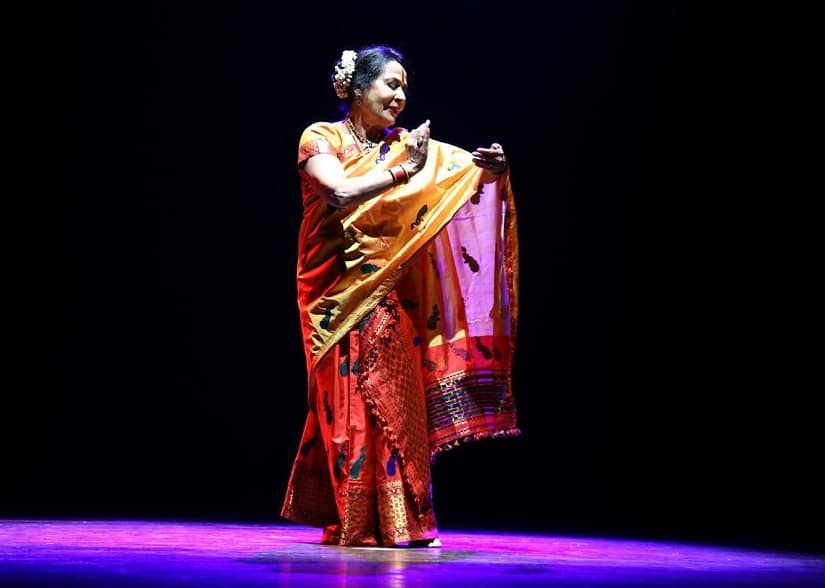Sonal Mansingh is as modest about her recent Rajya Sabha nomination as she is about the numerous other honours she’s received through a nearly six-decade career. “It’s not for me to say, it’s for others to assess,” Mansingh, 74, says, of being granted the Rajya Sabha nomination for her contribution to Indian classical dance. “I am satisfied with the way my students have shaped up. Of course, one’s struggles continue till the last breath because one wants to improve incessantly.” Born in Mumbai in 1944, Mansingh started learning Manipuri dance at the age of four. By age seven, she had begun classes in Bharatnatyam, and was trained by many teachers, including Kumar Jayakar. Ever since her first dance performance in 1962, Mansingh mesmerised audiences. Her stardom was devoid of tantrums and was made especially significant considering the era it was achieved in — when there was no social media (though the danseuse has a Twitter presence now) and the press comprised mostly newspapers and some magazines. Mansingh made Bharatanatyam, and later Odissi, so popular that people would name their daughters after her. [caption id=“attachment_4742251” align=“alignnone” width=“825”]  Danseuse Sonal Mansingh was nominated to the Rajya Sabha by President Ram Nath Kovind on 14 July. Image via facebook/@sonalmansingh.indianculture[/caption] As a mature dancer, she assimilated diverse dance forms (Manipuri and Kuchipudi, apart from Bharatnatyam and Odissi) to address social issues, choreographed memorable dance ballets, and mentored youngsters in a school that she started in the garage of her rented house. The growth of that school — The Centre for Indian Classical Dances, in New Delhi, established in 1977 — is today a great source of satisfaction to her. Report: Three-time BJP MP Ram Shakal and dancer Sonal Mansingh among Ram Nath Kovind's four Rajya Sabha nominations Yet those who look only at the glamour of the danseuse Sonal miss the self-made woman who lived life on her own terms and defied many odds. Among those challenges were her failed marriages — first to former diplomat Lalit Mansingh and later, to Georg Lechner. “I leave many things to destiny, it makes things easier in a way,” she told me a few years ago, referring to her personal lows. She didn’t claim alimony from Lalit; their divorce in 1974 coincided with a near-fatal accident for Sonal, which many predicted would end her dancing career. She credited her “value-based upbringing” (her grandfather was the late Mangal Das Pakvasa, who gave up his law practice and property in Maharashtra to become a freedom fighter; her mother Poornima Pakvasa ran a vocational institute for tribal girls in Saputara, Gujarat) with giving her strength to work through the tough times. Leaving behind the life of comfort she had enjoyed as a diplomat’s wife, Mansingh moved to an uncertain existence. She would live with friends, at other times, with her musicians. “Uncertainties chose me,” she explained. “There came a point in my life when I was almost homeless. A house could have been given to me, but then I said to myself, ‘It’s about knowing what you want, without making a compromise’.” What she wanted was to breathe dance. It was this that had brought her to Guru Kelucharan Mohapatra to learn Odissi, back in 1965, after she had perfected Bharatanatyam. “I wanted to find myself. I found myself in dance. Perhaps, I was also looking for myself in all my relationships. But after two attempts, I told myself, enough is enough, this is not for me. Maybe my being a dancer made a difference. Compromises change the course of your life, I didn’t want that,” Mansingh told me. Dance gave her what her marriages had not. She performed at all the major dance festivals of the world and earned laurels. The connoisseurs who frowned upon her “experiments” in dance, relented before her excellence. “All dancers know their footwork and abhinaya but she had the ability to turn it into magic. On stage she was like a moving sculpture. The way she bounced back after her accident shows her determination and love for dance,” says Kamal Tewari, former chairperson, Sangeet Natak Akademi, Chandigarh. Mansingh is known as a pathbreaker when it comes to artistic expression. Some of her major choreographic works include ‘Indradhanush’, ‘Dwi Varnaa’ (which fuses Bharatnatyam and Odissi), ‘Manavatta’, and dance dramas like ‘Sabras’, ‘Devi Durga’, ‘Aatmayan’, ‘Mera Bharat’, ‘Draupati’. She was among the youngest dancers to ever receive Padma Bhushan, in 1992. In 2003, she was conferred the Padma Vibhushan. In 2004, she was appointed the chairperson of Sangeet Natak Akademi. However, she had to resign when a number of artists protested against her “dictatorial” attitude. Does the Rajya Sabha nomination feel like validation? “A lot of water has flown under the bridge since 2004. It’s 2018,” Mansingh says. “It (the nomination) is a validation of art, culture and Indian tradition.”
Sonal Mansingh is as modest about her recent Rajya Sabha nomination as she is about the numerous other honours she’s received through a nearly six-decade career.
Advertisement
End of Article


)

)
)
)
)
)
)
)
)



